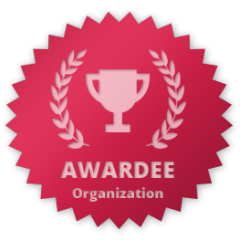The Institute for Scientist & Engineer Educators
Santa Cruz, CA | 2016

The official biography below was current at the time of the award. See the organization's website for its latest information.
The Institute for Scientist & Engineer Educators (ISEE) was formally established in 2008. The Institute grew out of the earlier pioneering work of the education program at the Center for Adaptive Optics—a National Science Foundation (NSF)-funded Science & Technology Center from 2000-2010 under the direction of Lisa Hunter. (Ms. Hunter is also the ISEE Director.) Sustained funding from the NSF allowed for continued innovation and creativity that led to the development of the ISEE education and mentoring programs. The University of California Observatories, also at University of California, Santa Cruz (UCSC), is a partner in the largest optical/near-infrared telescopes in the world, which are located in Hawaii: the twin 10-meter Keck Telescopes and the upcoming 30 Meter Telescope.
ISEE has mentored hundreds of undergraduates pursuing STEM degrees through its innovative internship program, now known as "Akamai" (the Hawaiian word for smart or clever). In the Akamai model, multiple mentors (including staff mentors, future faculty, and project supervisors) work with interns from Native Hawaiian and other underrepresented groups. Advancement of Native and underrepresented populations in STEM careers is seen by Akamai as vital to the Hawaiian economy and the success ofU.S.-based astronomy. Recognition of ISEE's achievements in engaging and retaining diverse local talent through Akamai has come from over 25 companies, labs, and observatories in Hawai'i that have hosted interns and from the funding organizations that have supported and continue to support Akamai: UCSC, University of Hawaii, TMT International Observatory, Hawaii Community Foundation, Air Force Office of Scientific Research, and National Solar Observatory/Daniel K. Inouye Solar Telescope.
One of ISEE' s overarching goals is to increase the persistence of undergraduates, particularly from groups underrepresented in STEM. A key premise of the ISEE philosophy is that a mentored STEM experience can be intentionally designed to be both a productive, authentic contribution, and to support factors known to influence persistence in STEM. ISEE has pinpointed five elements of a "designed" STEM experience that, through effective mentoring, support factors linked to persistence: (1) Fostering ownership of a contribution to the STEM workplace; (2) teaching the practice of explaining; (3) creating opportunities for interns' contributions to be recognized; (4) formatively assessing interns' progress; and (5) making the norms of STEM culture accessible.
Since 2003, ISEE has worked with 372 interns. Forty-one percent are women, 52 percent are underrepresented minorities, and 23 percent are Native Hawaiians. ISEE reaches undergraduate populations that typically do not have access to research experiences: 57 percent of interns are undergraduates in their first two years and 37 percent are community college students. Three years after the internship, 81 percent of ISEE alumni persisted in STEM, either into undergraduate and/or graduate education or directly into the workforce. In recent years, the ISEE model has been replicated in fourteen programs in eleven institutions across the U.S. and Canada.




